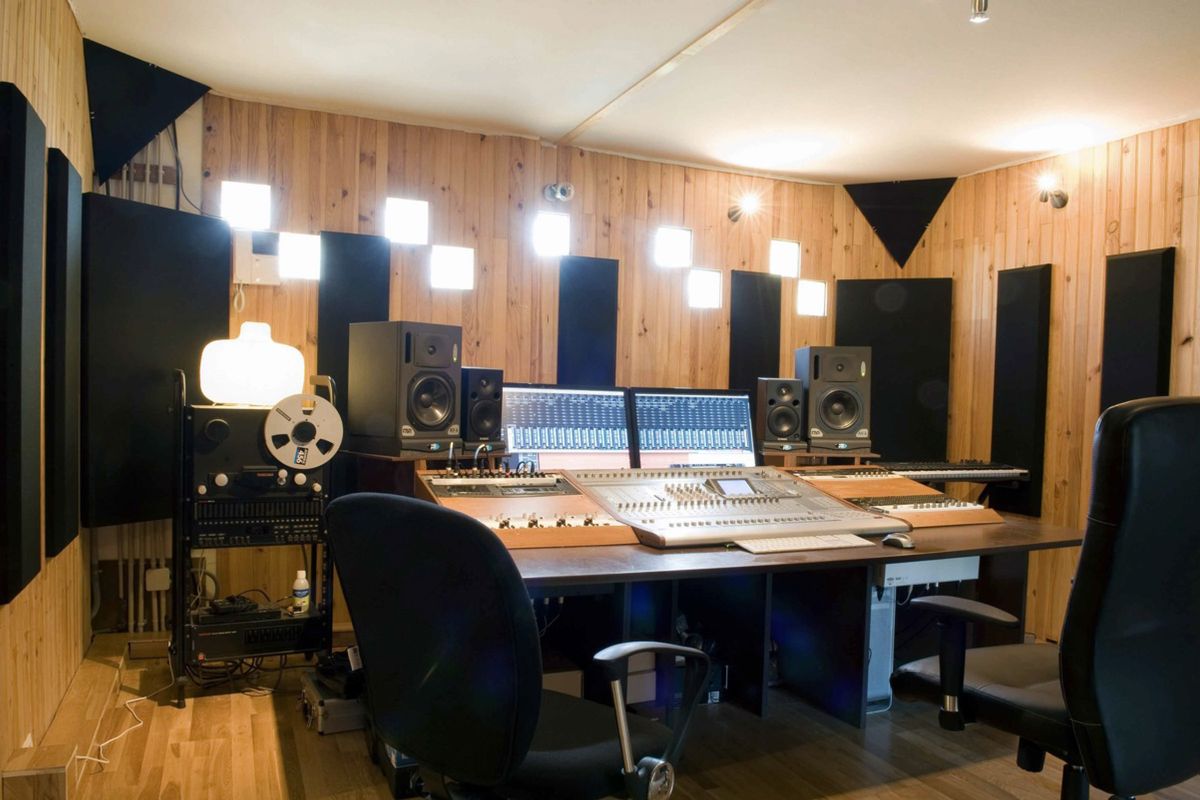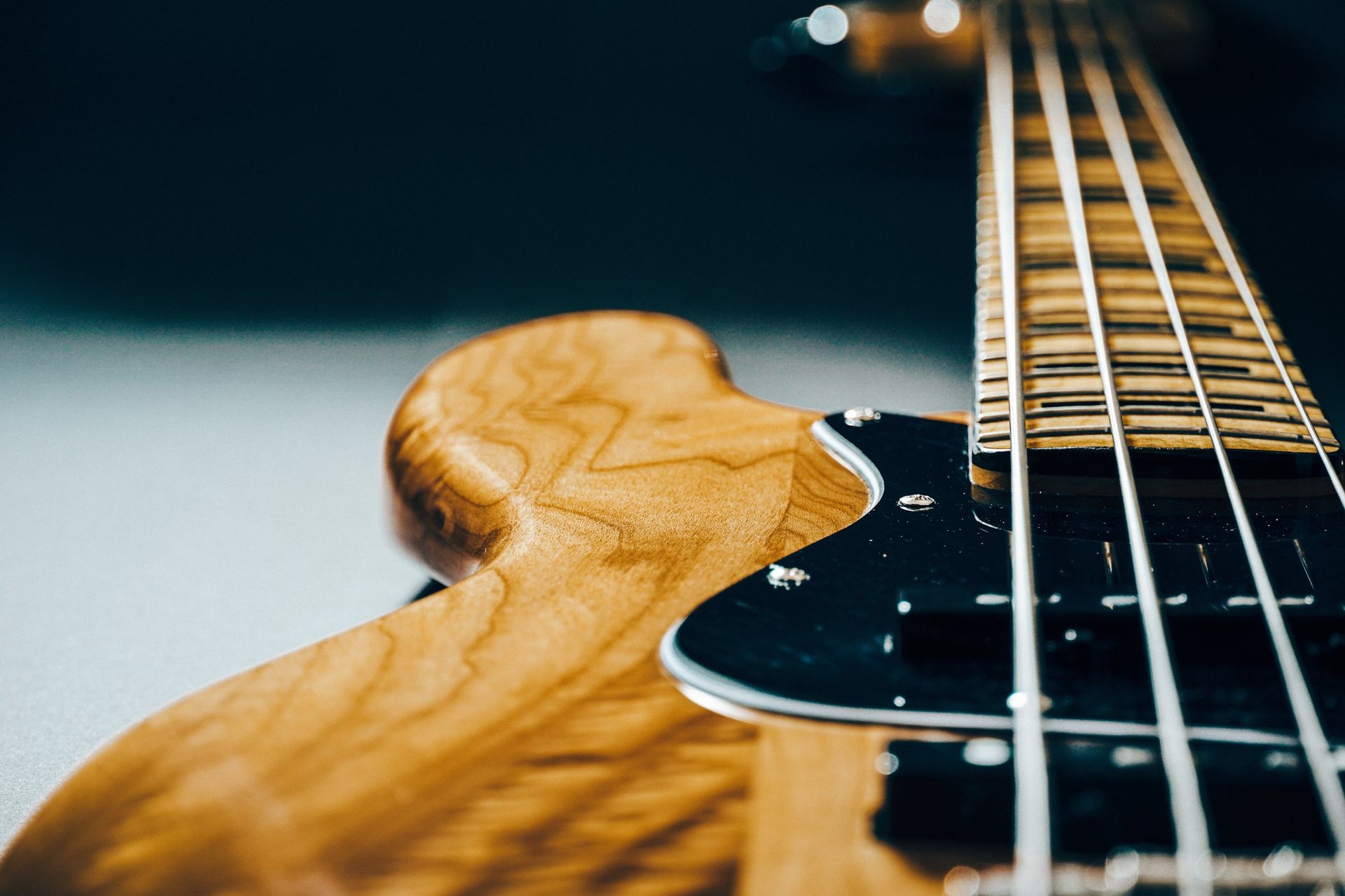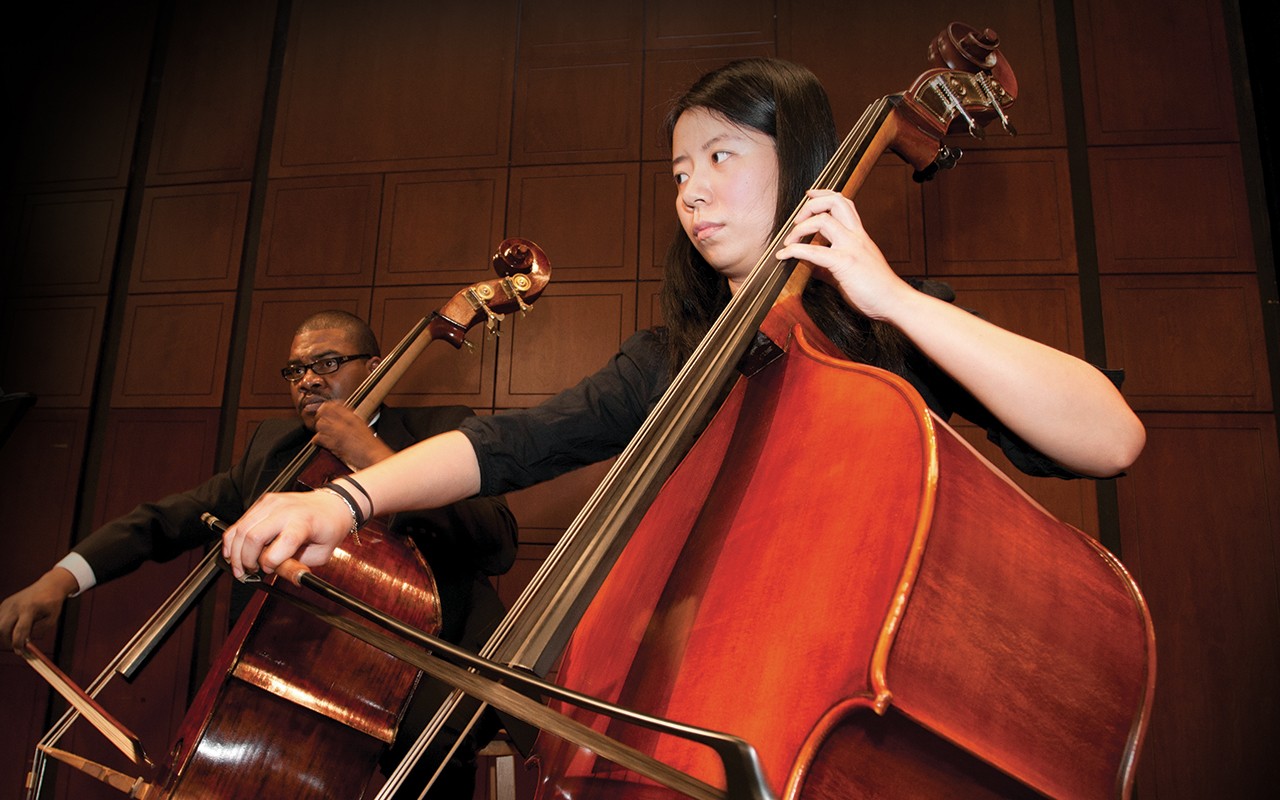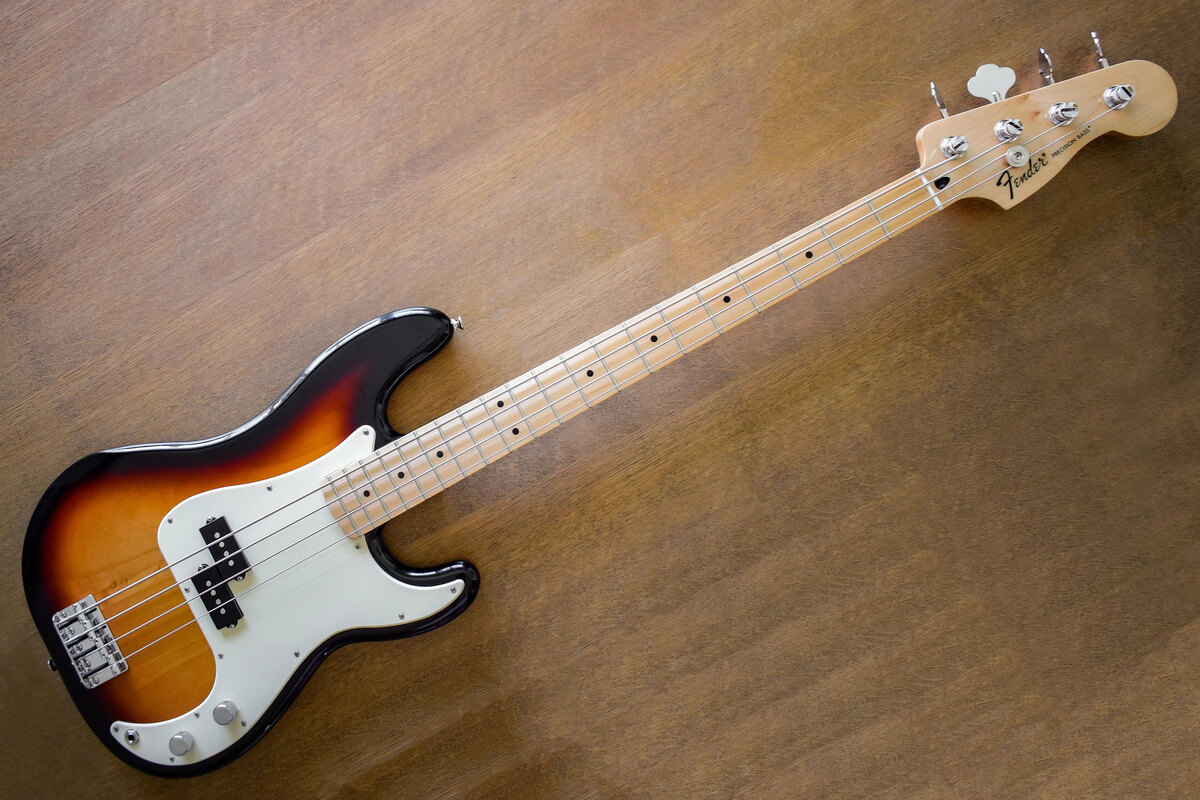Home>Instruments>Bass>What Do Bass Traps Do


Bass
What Do Bass Traps Do
Modified: February 18, 2024
Learn how bass traps can improve the sound quality in your space. Discover the benefits of using bass traps to eliminate unwanted low-frequency resonances and achieve a balanced audio experience.
(Many of the links in this article redirect to a specific reviewed product. Your purchase of these products through affiliate links helps to generate commission for AudioLover.com, at no extra cost. Learn more)
Table of Contents
Introduction
When it comes to creating the perfect sound environment, having a deep understanding of acoustics is essential. Whether you are a musician, sound engineer, or simply an audio enthusiast, achieving optimal sound quality is paramount. One crucial component that plays a significant role in improving the acoustics of any room is the bass trap.
Bass traps are specifically designed to address low-frequency sound waves that tend to accumulate and cause problems in a space. These low-frequency sound waves, commonly known as bass, can be challenging to control and can negatively impact the overall sound quality.
In this article, we will delve into the world of bass traps, exploring their definition, importance, and how they work. We will also discuss the different types of bass traps available, their placement considerations, and the benefits they offer for achieving exceptional sound quality. Whether you are setting up a home recording studio or looking to optimize the acoustics of your listening room, understanding bass traps is crucial.
Definition of Bass Traps
Bass traps are acoustic panels or devices designed to absorb low-frequency sound waves in a room or studio. They are essential for controlling unwanted reflections, resonances, and standing waves that occur in the bass frequencies. By effectively reducing or eliminating these problems, bass traps help to create a more balanced and accurate sound reproduction.
Unlike other acoustic treatments that focus on mid and high frequencies, bass traps specifically target low-frequency sound waves. This is because low frequencies have longer wavelengths and are more challenging to control. They tend to accumulate in the corners and edges of a room, causing bass buildup, muddiness, and uneven frequency response.
The primary function of bass traps is to absorb and dissipate the energy of low-frequency sound waves, preventing them from reflecting back into the room and causing acoustic issues. By reducing the intensity of the bass frequencies, bass traps help to improve the overall clarity, definition, and imaging of the sound. They also assist in achieving a more accurate and balanced bass response throughout the listening space.
Bass traps come in various shapes and sizes, and they can be made of different materials, such as foam, fiberglass, or membrane-based technologies. Each type of bass trap offers its unique characteristics and level of absorption, allowing for customization based on specific room dimensions and acoustic requirements.
In summary, bass traps are specialized acoustic treatment devices that target low-frequency sound waves to mitigate problems such as bass buildup, resonance, and standing waves. They play a crucial role in achieving a well-balanced and accurate sound reproduction in any room or studio setting.
Importance of Bass Traps
Bass traps play a vital role in creating an optimal listening or recording environment by addressing the unique challenges posed by low-frequency sound waves. Here are some key reasons why bass traps are essential:
- Improved Sound Clarity: One of the primary benefits of bass traps is their ability to reduce excessive bass buildup and resonances. By absorbing and dissipating low-frequency sound waves, bass traps help to minimize muddiness and improve the clarity and definition of the sound.
- Controlled Room Modes: Room modes or standing waves occur when low-frequency sound waves bounce back and forth between parallel walls, resulting in uneven bass response. Bass traps strategically placed in the corners and wall-ceiling junctions help to minimize the impact of room modes, ensuring a more balanced and accurate bass reproduction.
- Reduced Acoustic Problems: Bass frequencies tend to accumulate in corners and edges, leading to resonances and uneven frequency response. Bass traps effectively absorb these sound waves, minimizing problematic reflections and reducing acoustic issues, such as flutter echoes and room ringing.
- Enhanced Sound Imaging: By reducing unwanted reflections and resonances, bass traps help to create a more focused and precise soundstage. This improved sound imaging allows for better localization of instruments and vocals, resulting in a more immersive and realistic listening experience.
- Optimal Recording Conditions: In a recording studio, accurate monitoring is crucial. By providing a controlled acoustic environment, bass traps help to ensure that the recordings captured accurately represent the intended sound. This is particularly important for low-frequency instruments such as bass guitars and kick drums.
In essence, bass traps are essential for addressing the challenges posed by low-frequency sound waves and achieving optimal sound quality. By improving sound clarity, controlling room modes, reducing acoustic problems, enhancing sound imaging, and providing optimal recording conditions, bass traps significantly contribute to creating a balanced and accurate listening or recording environment.
How Bass Traps Work
Bass traps work by absorbing and dissipating the energy of low-frequency sound waves, helping to control and mitigate the acoustic issues caused by excessive bass buildup and resonances. The underlying principle behind the functioning of bass traps is their ability to convert sound energy into heat energy.
When low-frequency sound waves encounter a bass trap, they enter the material and cause it to vibrate. The material of the bass trap is designed to have properties that allow for the conversion of the sound energy into heat, thereby reducing the intensity of the sound wave. The vibrations of the material create friction, which dissipates the energy of the sound wave as heat.
Bass traps are typically designed with a combination of porous materials that have specific absorption properties for low frequencies. Foam, fiberglass, and membrane-based technologies are commonly used materials in bass trap construction. Foam bass traps feature an open-cell structure that allows sound waves to penetrate and get absorbed within the material. Fiberglass bass traps consist of densely packed fibers that effectively trap sound waves and convert them into heat. Membrane-based bass traps use diaphragms or membranes that vibrate in response to sound waves, absorbing and dissipating their energy.
Placement of bass traps is critical for their effectiveness. Placing bass traps in the corners, where low-frequency sound waves tend to accumulate the most, helps to minimize resonances and room modes caused by bass buildup. Additional bass traps can be strategically placed at wall-ceiling junctions and other areas where low-frequency reflections occur.
It’s important to note that bass traps do not completely eliminate bass frequencies or soundproof a room. Rather, they serve to reduce problematic reflections, resonances, and standing waves, resulting in a more balanced and controlled bass response.
In summary, bass traps work by absorbing low-frequency sound waves and converting their energy into heat through vibration and friction. The materials used in bass trap construction are designed to facilitate this energy conversion process. Proper placement of bass traps in critical areas helps to minimize bass buildup and control the acoustic issues associated with low frequencies.
Types of Bass Traps
There are several types of bass traps available, each with its unique design and characteristics to address specific acoustic needs. Here are some common types of bass traps:
- Foam Bass Traps: Foam bass traps are one of the most widely used types of bass traps. They are made from open-cell foam with specialized absorption properties for low-frequency sound waves. Foam bass traps are compact and lightweight, making them easy to install and move around. They provide effective absorption in the lower frequency range and are commonly used in home studios and recording spaces.
- Fiberglass Bass Traps: Fiberglass bass traps consist of densely packed fiberglass material that efficiently absorbs low-frequency sound waves. They are highly effective at controlling room modes and providing broadband absorption. Fiberglass bass traps are available in various sizes and shapes and are typically used in professional recording studios and high-end listening rooms.
- Membrane Bass Traps: Membrane bass traps utilize a diaphragm or membrane that vibrates in response to low-frequency sound waves, absorbing and dissipating their energy. These bass traps are designed to target specific frequencies and provide effective absorption in critical areas. Membrane bass traps offer versatility in tuning the absorption characteristics and are commonly used in both recording studios and home listening rooms.
- Panel Bass Traps: Panel bass traps are rigid absorbers that consist of a combination of porous materials and air gaps. These traps are designed to provide broadband absorption, addressing a wide range of frequencies. Panel bass traps are available in various thicknesses and can be mounted directly on walls or built as freestanding units.
- Corner Bass Traps: Corner bass traps are specifically designed to target the bass buildup that occurs in the corners of a room. They are triangular-shaped absorbers that fit snugly into the corners, absorbing low-frequency sound waves that tend to accumulate in these areas. Corner bass traps are available in foam, fiberglass, and other materials, providing effective low-frequency absorption in a critical area of the room.
It’s important to note that the choice of bass trap depends on the specific acoustic requirements and the size and shape of the room. Combining different types of bass traps can yield optimal results, ensuring a well-balanced and controlled bass response throughout the listening or recording space.
In summary, there are various types of bass traps available, including foam, fiberglass, membrane, panel, and corner bass traps. Each type offers unique characteristics and is designed to address specific acoustic needs. The selection of bass traps depends on factors such as room size, desired absorption characteristics, and intended application.
Placement of Bass Traps
The proper placement of bass traps is essential for their effectiveness in controlling low-frequency sound waves and improving the overall sound quality in a room or studio. Here are some key considerations for the placement of bass traps:
- Corner Placement: The corners of a room are where low-frequency sound waves tend to accumulate the most. Placing bass traps in the corners helps to address bass buildup, minimize resonances, and control room modes. Corner bass traps, specifically designed to fit snugly into the corners, are highly effective in absorbing low-frequency energy in these critical areas.
- Wall-Ceiling Junctions: Another important placement area for bass traps is at the junction between the walls and the ceiling. Low-frequency sound waves can reflect off this junction, causing unwanted resonances and uneven bass response. Placing bass traps at these junctions helps to mitigate these issues and create a more balanced sound environment.
- Reflection Points: Identifying and treating reflection points is crucial for optimizing the acoustics of a room. These are areas where sound waves bounce off surfaces and cause reflections that can affect the overall sound quality. Placing bass traps at reflection points, such as the first reflection points on walls and the center of the room, helps to reduce unwanted reflections and improve sound clarity.
- Room Size and Shape: The size and shape of the room play a significant role in determining the placement of bass traps. Larger rooms with more cubic volume may require additional bass traps to effectively control low-frequency energy. Similarly, irregularly shaped rooms may have specific acoustic challenges that require customized placement of bass traps for optimal results.
- Combination of Trap Types: Combining different types of bass traps can maximize their effectiveness. For example, using corner bass traps along with panel or membrane bass traps distributed throughout the room can help to achieve a well-balanced and controlled bass response. Experimenting with different placement configurations can help determine the most effective arrangement for a particular room.
It’s important to note that the specific placement of bass traps may vary depending on the unique characteristics of the room and the acoustic goals. Working with a professional acoustic consultant or following general guidelines based on room size and shape can greatly assist in determining the optimal placement of bass traps.
In summary, proper placement of bass traps is crucial for their effectiveness in controlling low-frequency sound waves. Placing bass traps in the corners, wall-ceiling junctions, reflection points, and considering room size and shape can help to mitigate bass buildup, minimize resonances, and improve overall sound quality in a room or studio.
Benefits of Using Bass Traps
Using bass traps in a room or studio offers numerous benefits that contribute to achieving optimal sound quality and a more controlled acoustic environment. Here are some key benefits of using bass traps:
- Improved Low-Frequency Control: Bass traps effectively absorb low-frequency sound waves, reducing bass buildup, resonances, and standing waves. This results in a more balanced and controlled bass response, allowing for accurate monitoring and reproduction of low-frequency content.
- Enhanced Clarity and Definition: By reducing excessive bass accumulation and resonances, bass traps improve the clarity and definition of the sound. This leads to a more focused and precise audio reproduction, allowing for better separation of instruments and vocals and improved overall sound imaging.
- Reduced Acoustic Issues: Bass traps help to minimize acoustic issues caused by low-frequency sound waves, such as flutter echoes, room ringing, and uneven frequency response. By absorbing and dissipating low-frequency energy, bass traps create a more controlled and balanced acoustic environment.
- Control of Room Modes: Room modes, or standing waves, can cause uneven bass response and resonances in a room. Bass traps strategically placed in corner and wall-ceiling junctions help to control room modes by absorbing low-frequency energy. This results in a more even bass response throughout the listening or recording space.
- Optimized Recording and Mixing: In a recording studio, accurate monitoring is crucial for capturing and mixing audio. Bass traps provide a more controlled and accurate acoustic environment, ensuring that the recorded and mixed sound accurately represents the intended sound. This is particularly vital for low-frequency instruments, such as bass guitars and kick drums.
- Flexibility and Customization: Bass traps come in various types, shapes, and sizes, allowing for flexibility and customization based on room dimensions and acoustic requirements. This adaptability enables users to tailor the bass trap placement and configuration to achieve the best possible sound quality in their specific space.
The combined benefits of improved low-frequency control, enhanced clarity and definition, reduced acoustic issues, control of room modes, optimized recording and mixing, and flexibility make bass traps an invaluable tool for achieving exceptional sound quality in any room or studio setting.
In summary, using bass traps provides a range of benefits, including improved low-frequency control, enhanced clarity and definition, reduced acoustic issues, control of room modes, optimized recording and mixing, and flexibility for customization. Incorporating bass traps into a room or studio setup significantly contributes to creating a more controlled and accurate acoustic environment.
Considerations when Using Bass Traps
While bass traps are highly effective in improving the acoustic environment and achieving optimal sound quality, there are some important considerations to keep in mind when using them:
- Room Size and Shape: The size and shape of the room can affect the placement and effectiveness of bass traps. Larger rooms may require additional bass traps to effectively control low-frequency energy, while irregularly shaped rooms may present unique acoustic challenges that need to be addressed through specific placement of bass traps.
- Proper Placement: Placing bass traps in the right locations is crucial for their effectiveness. The corners, wall-ceiling junctions, and reflection points are key areas to target. It is recommended to consult with a professional acoustic consultant or follow general guidelines based on the specific room characteristics to ensure optimal placement.
- Combination of Trap Types: Combining different types of bass traps can maximize their effectiveness. Different types of traps have varying absorption characteristics, so using a combination of traps can help to achieve a more balanced and controlled bass response throughout the room.
- Room Treatment Balance: When treating a room acoustically, it is important to strike a balance between absorption and diffusion. Over-treating a room with excessive bass traps can result in an overly dead, unnatural sound. It is essential to assess the overall acoustic needs of the room and incorporate a combination of bass traps, diffusers, and other acoustic treatments accordingly.
- Room Functionality: Consider the functionality and purpose of the room when using bass traps. Recording studios may require a different approach to bass trap placement compared to home listening rooms or live performance spaces. It’s essential to consider the specific requirements and goals of the room to determine the most appropriate placement and configuration of bass traps.
- Budget and Aesthetic Considerations: Bass traps come in various shapes, sizes, and materials, and their cost can vary. Consider your budget and aesthetic preferences when selecting and installing bass traps. It is possible to find cost-effective options without compromising on performance or aesthetics.
By taking these considerations into account, you can optimize the use of bass traps in your room or studio setting, ensuring they effectively address the specific acoustic needs while meeting your functional and budgetary requirements.
In summary, key considerations when using bass traps include the size and shape of the room, proper placement, a combination of trap types, achieving a balance with other room treatments, considering the room’s functionality, and accounting for budget and aesthetic preferences. Taking these factors into consideration will help you maximize the effectiveness of bass traps in achieving optimal sound quality.
Conclusion
Bass traps are an integral component in creating an optimal sound environment, particularly when it comes to controlling low-frequency sound waves. From improving sound clarity and definition to reducing resonances and addressing room modes, bass traps offer numerous benefits for achieving exceptional sound quality.
By absorbing and dissipating low-frequency energy, bass traps help to create a more balanced and controlled bass response, resulting in a more accurate sound reproduction. They play a crucial role in minimizing acoustic issues, providing optimized recording and mixing conditions, and enhancing overall sound imaging.
When using bass traps, it’s important to consider factors such as room size and shape, proper placement, the combination of trap types, room functionality, and budget and aesthetic preferences. Each room has unique acoustic characteristics, and tailoring the placement and selection of bass traps accordingly can ensure optimal results.
Whether you’re setting up a home recording studio, optimizing the acoustics of a listening room, or working in a professional recording facility, incorporating bass traps can significantly enhance the sound quality and create a more controlled and immersive listening experience.
In conclusion, bass traps are essential tools for anyone looking to achieve exceptional sound quality. By effectively addressing low-frequency sound issues and creating a balanced and controlled bass response, bass traps contribute to creating an optimal acoustic environment in which music and sound can be experienced in their fullest and most accurate form.











